Inside: Learn how to get rid of dust mites once and for all using a homemade DIY mattress spray that uses natural ingredients and is cheap to make!
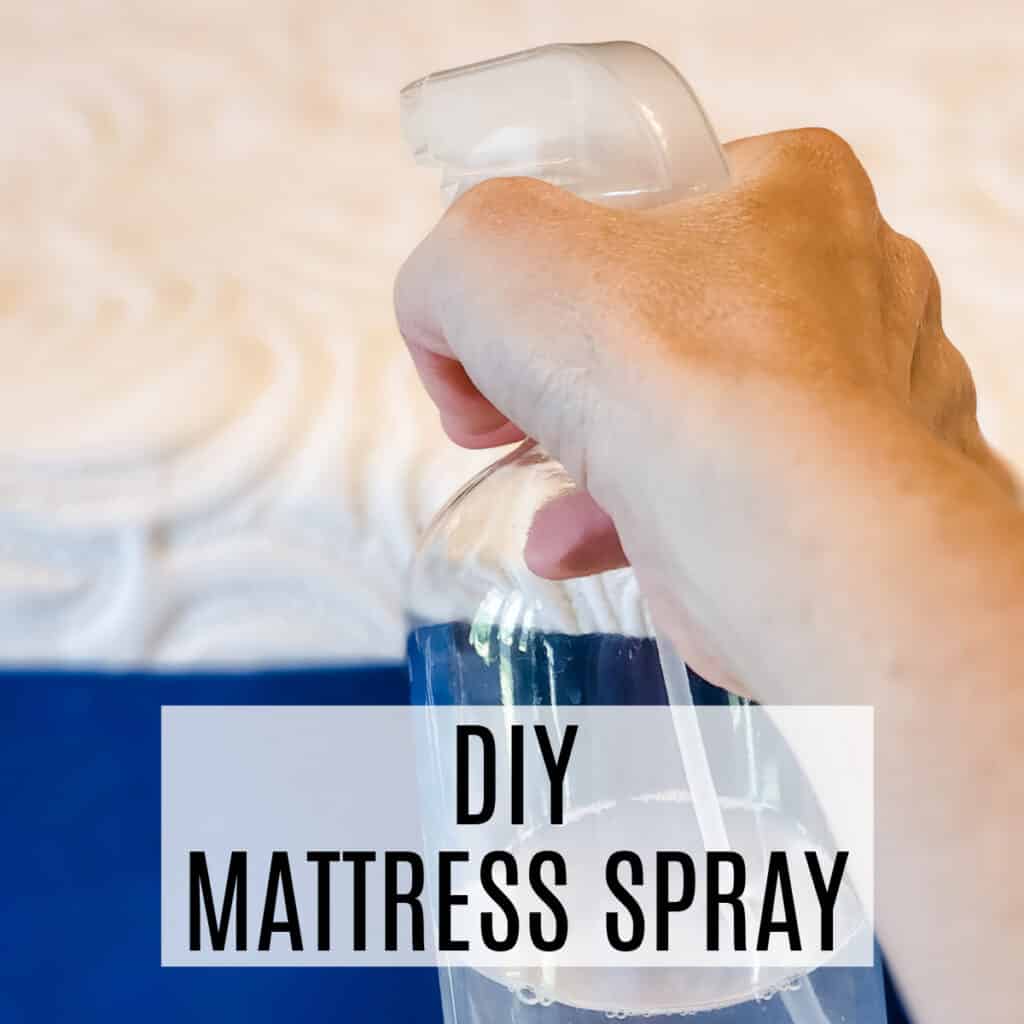
Anyone else hate the idea of bugs and mites in your house? I can't stand the idea of spiders, bugs, and mites. They really gross me out.
So, when I recently was looking at new mattresses and I saw that most homes have dust mites in mattresses I was so disgusted. The thought of sleeping on a mattress that has a dust mite infestation, absolutely freaked me out!
I decided to see what I could do to help prevent and get rid of dust mites and decided to create a spray that will demolish these microscopic pests.
My DIY mattress works if you want to take preventive measures or if you are currently fighting the presence of dust mites.
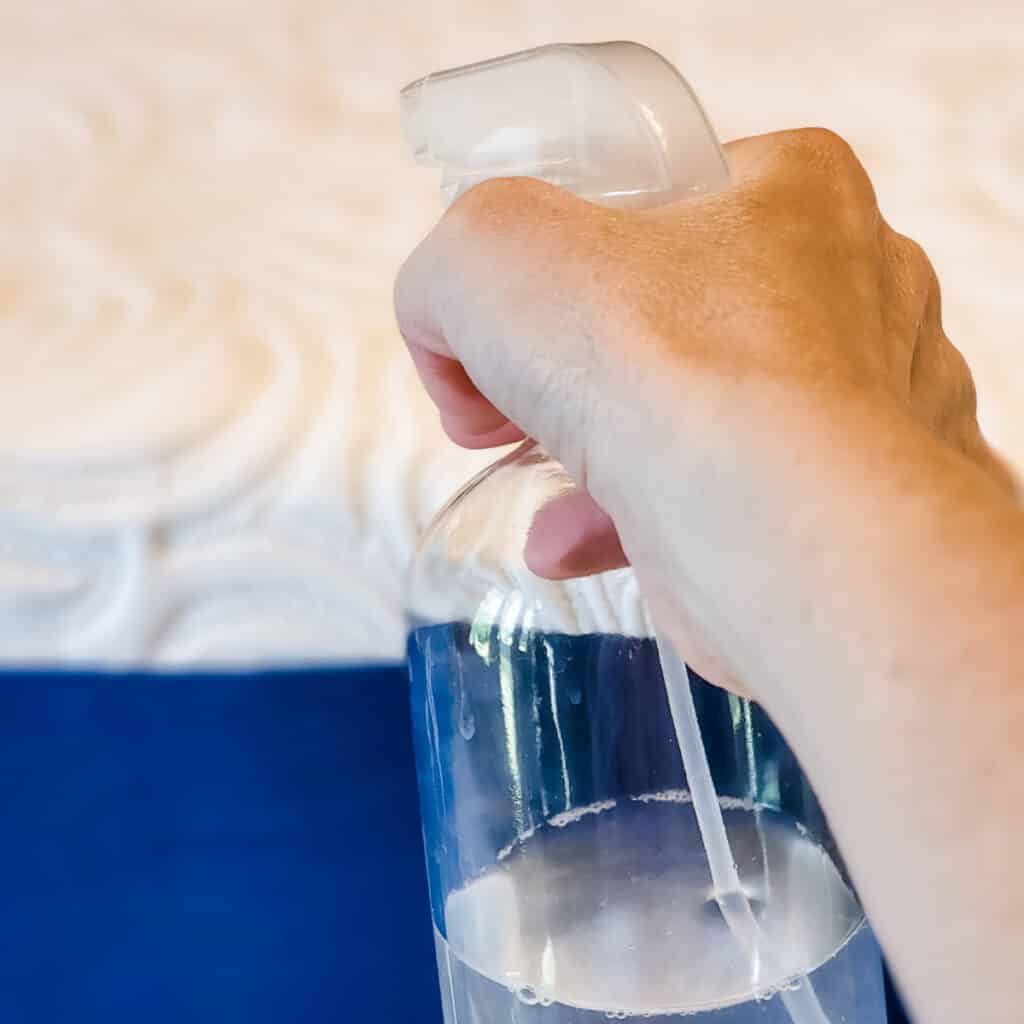
What Are Dust Mites?
Dust mites are tiny, microscopic creatures that are part of the spider family. They thrive in warm, humid environments and feed on dead skin cells shed by humans and pets, which makes bedrooms and other frequently used areas, ideal for their new home.
These mites are a common allergen source and can contribute to allergic reactions, asthma, and eczema in sensitive populations. Dust mites are not visible to the naked eye, with adult mites measuring about 0.2–0.3 millimeters in length. They reproduce quickly in humid conditions, and their presence is often detected through allergy tests or by the symptoms they may cause.
Reducing humidity levels, regular cleaning, and using allergen-proof bed covers are among the strategies to control dust mite populations in homes.
It's a good idea to start protecting your home against them if you don't have mites already.
How to Get of Mattress Dust Mites with a DIY Spray
What You'll Need:
- Vinegar - we are using white distilled vinegar.
- Water
- Tea Tree Oil and Peppermint Oil - Tea tree oil, peppermint oil, and vinegar are all insecticides so they will work to kill off any dust mites that are currently in the mattress. Plus, just about all bugs hate peppermint oil so they will avoid going near the mattress too.
- Spray bottle - I like using glass bottles when making homemade cleaners.
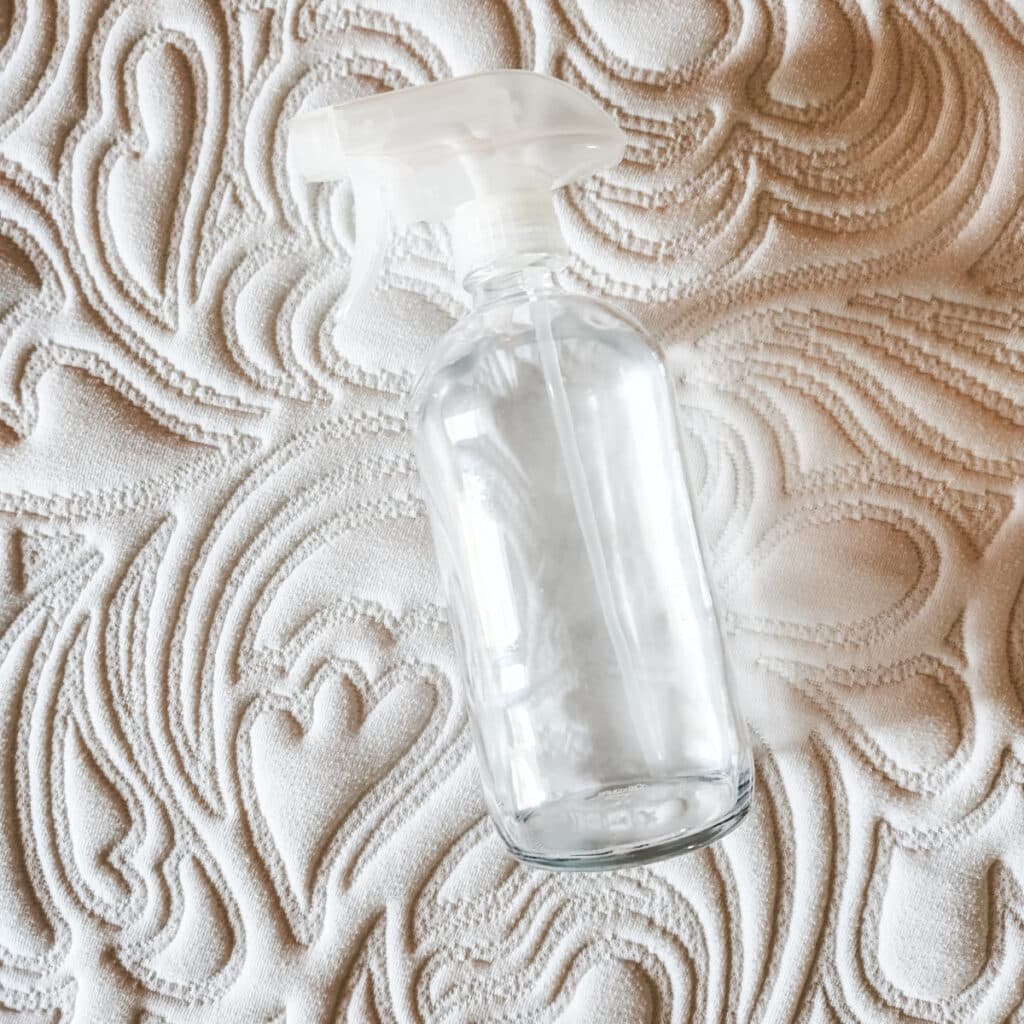
How to Make DIY Mattress Spray
Start by adding a cup of vinegar (just the plain white vinegar) and a cup of water to the spray bottle.
Then add about 15 drops of tea tree oil and about 5 drops of peppermint oil to the bottle. Put the spray top on and give it a good shake.
**This spray is also safe to use on memory foam mattresses as well.
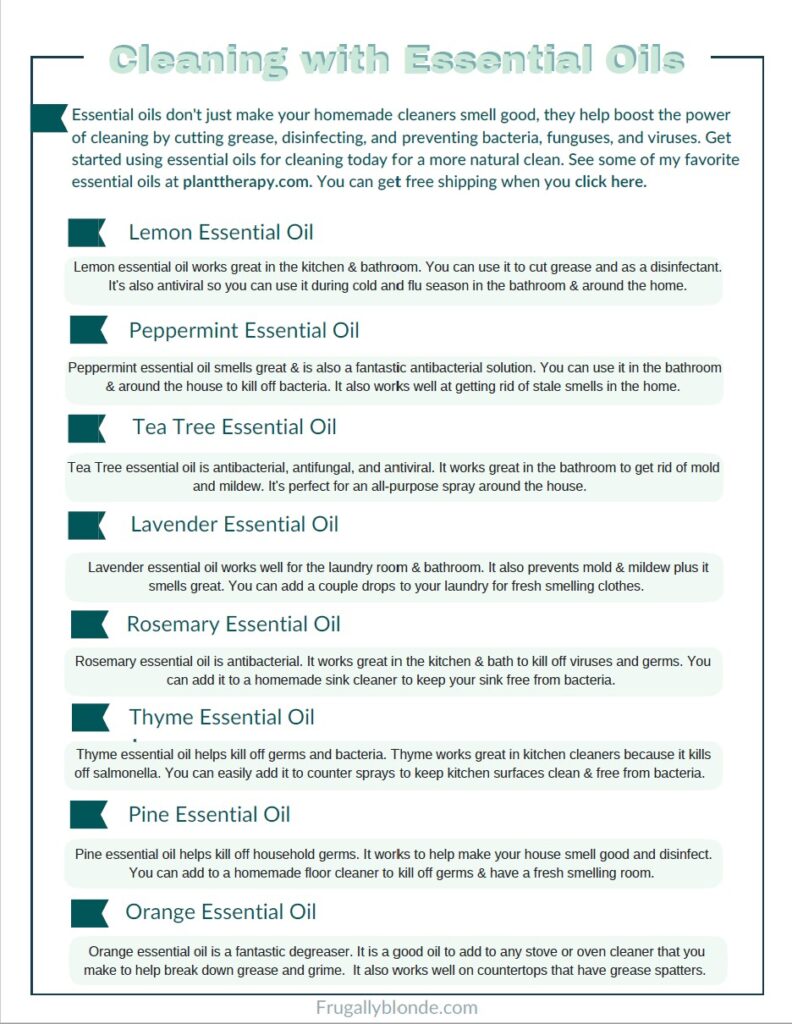
Get Started Cleaning with Essential Oils!
Get your free Cleaning with Essential Oils printable!
Using The Natural Dust Mite Spray For Mattresses
STEP 1: Take everything off the bed. Wash your sheets, pillowcases, dust ruffle (if you have one), removable cover, and comforter. Make sure you are using hot water when you wash them. Hot water will help kill off dust mites and keep your sheets and bedding clean.
STEP 2: Give the DIY mattress spray a good shake to mix up all of the essential oils. Then, spray down the surface of your mattress.
STEP 3:It should feel slightly damp to touch. Make sure that you get the sides of the mattress sprayed well in addition to the top of the mattress.
STEP 4: You may want to spray down your pillows too, however, the best way is drying them for 5-10 minutes in the dryer on high heat. They can't withstand the high temperatures.
STEP 5: Let the mattress air dry for 4-5 hours. If you need it to dry quickly you can turn on a fan and have it blowing across the bed.
STEP 6: Once it is done airing out then you can vacuum the mattress to remove any dust and then put the sheets and comforter back on the bed.
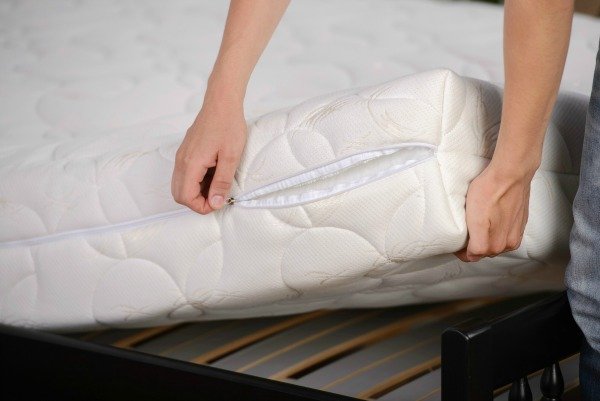
Preventing Dust Mites
Once you have used the DIY mattress spray to kill off the dust mites you can keep them coming back with a few tips and tricks.
Reduce Humidity:
Use a dehumidifier to keep the relative humidity levels in your home below 50%, as dust mites cannot thrive in low humidity environments.
Ventilate your home well, especially areas like the kitchen and bathroom that can become humid.
Wash Bedding Regularly:
Wash all bedding in the washing machine using hot water weekly to kill dust mites. This includes sheets, pillowcases (throw pillow covers), and blankets (duvet covers).
Consider using a dryer on a hot setting to further ensure that mites are killed. Pet dander also attracts mites, so don't forget pet beds.
Remove or Reduce Fabric Clutter:
Curtains/window coverings, stuffed toys, upholstered furniture, and carpets are an ideal breeding ground for dust mites. Consider replacing them with easier-to-clean alternatives like blinds, washable toys, leather or vinyl furniture, and hardwood or laminate flooring.
If removing carpets isn't an option, vacuum them regularly with a good vacuum cleaner equipped with a HEPA filter. It's best to clean carpets often with a steam cleaner.
Frequent Dusting and Vacuuming:
Dust all hard surfaces with a damp cloth to prevent dust from becoming airborne.
Vacuum carpets, rugs, and upholstered furniture regularly using a vacuum cleaner with a HEPA filter to trap dust mites.
Air Filtration:
Use an air purifier with a HEPA filter to help remove dust mite waste and other allergens from the air. Don't forget to change your main air filter on a regular basis.
Limiting Decor:
Reduce the number of fabric-based decorations like tapestries and cloth wall hangings (along with bed linens) that can harbor pesky dust mites.
Avoid Down-Filled Bedding and Pillows:
Opt for synthetic materials that are less likely to attract dust mites.
Use allergen-proof bed covers:
Using a dust mite cover will keep them away (along with bed bugs) and are often waterproof as well. The only downside is that it can be a little warm to sleep on. These will also cover the box spring too.
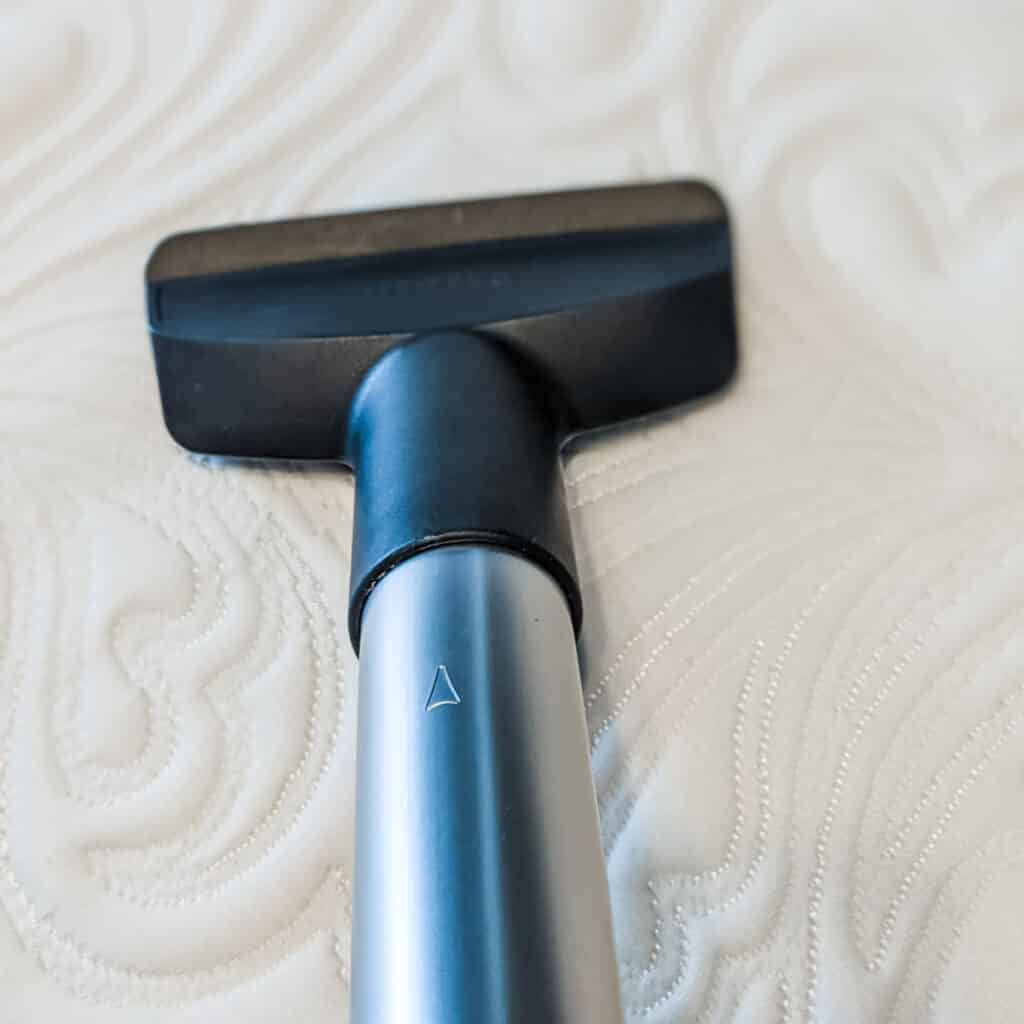
How do you know if your mattress has dust mites?
Detecting dust mites in your mattress directly is challenging because they are microscopic and cannot be seen with the naked eye. However, there are several signs and considerations that can suggest their presence:
- Allergy Symptoms: If you experience allergy symptoms such as sneezing, runny or stuffy nose, itchy eyes, or asthma attacks that seem to worsen at night or upon waking, this could indicate dust mite exposure, and suggest that you do in fact have a dust mite allergy. An allergy skin test can confirm if you talk with your doctor.
- Age of the Mattress: Older mattresses are more likely to harbor dust mites, as they have had more time to accumulate dead skin cells and provide a favorable environment for dust mites.
- Visible Dust: While you cannot see dust mites themselves, an accumulation of dust in and around your bed can indicate the presence of their waste products and skin, which contribute to allergic reactions.
- Humidity Levels: High humidity levels in your bedroom create an ideal environment for dust mites. If your room is often humid, it's more likely that dust mites are thriving.
- Lack of Protective Covers: If you have not been using dust mite-proof covers on your mattress and pillows, there's a higher chance that dust mites have established themselves.
What is the difference between dust mites and bed mites?
The terms "dust mites" and "bed mites" often cause confusion, but they essentially refer to the same problem from slightly different perspectives. Here's how they relate:
Dust Mites: These are tiny creatures that belong to the arachnid family, thriving in warm, humid environments. Dust mites feed on dead skin flakes shed by humans and pets. They are commonly found all around the house, not just within beds. Dust mite allergies are a real problem for many people.
Bed Mites: This term is less scientifically specific and is sometimes used to refer to dust mites when they are found specifically in the context of bedding. Some may also be referring to bed bugs, which as not the same as mites. Instead of feeding on dead human skin cells, bed bugs actually use humans as their host.
If you can't recall the last time your had a good night’s sleep and you have been suffering with watery eyes, runny nose, itchy skin, and/or nasal congestion it's possible you are being exposed to dust mite allergens. Good news though! In just a few simple steps and our all natural mattress cleaning spray, you can rid the problem once and for all, plus prevent the mites from coming back in the future.
Homemade Dust Mite Spray
Equipment
- 1 spray bottle
Ingredients
- 1 cup Vinegar
- 1 cup Water
- 15 drops Tea Tree Oil
- 5 drops Peppermint Oil
Instructions
- Start by adding a cup of vinegar (just the plain white vinegar) to the spray bottle.
- Next, add a cup of water to the spray bottle.
- Then add about 15 drops of tea tree oil and about 5 drops of peppermint oil to the bottle.
- Put the spray top on and give it a good shake.
- To use shake the bottle and spray down the mattress. Make sure that it feels slightly damp to the touch.
- Let the mattress dry and vacuum the mattress.




Leave a Reply